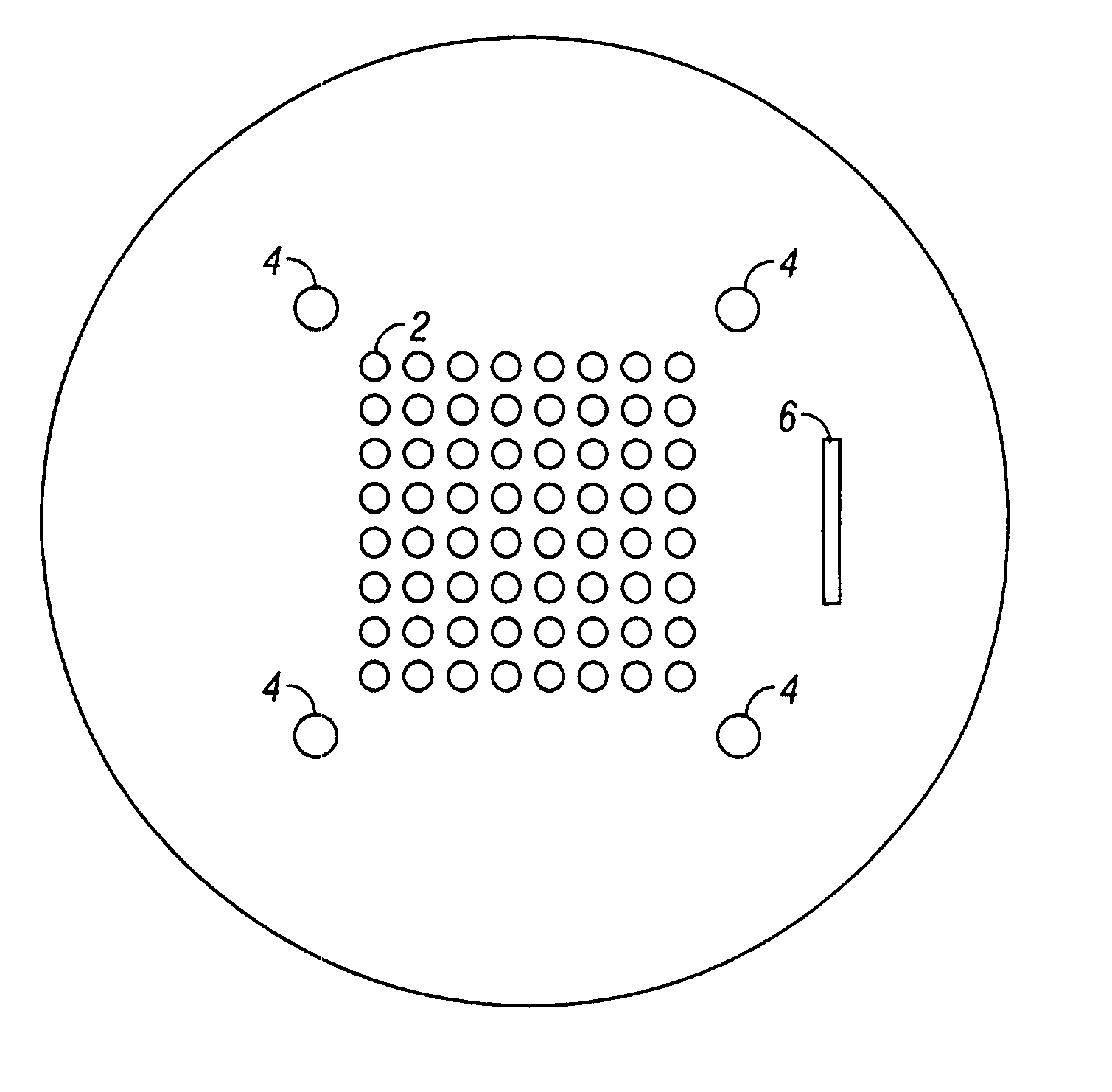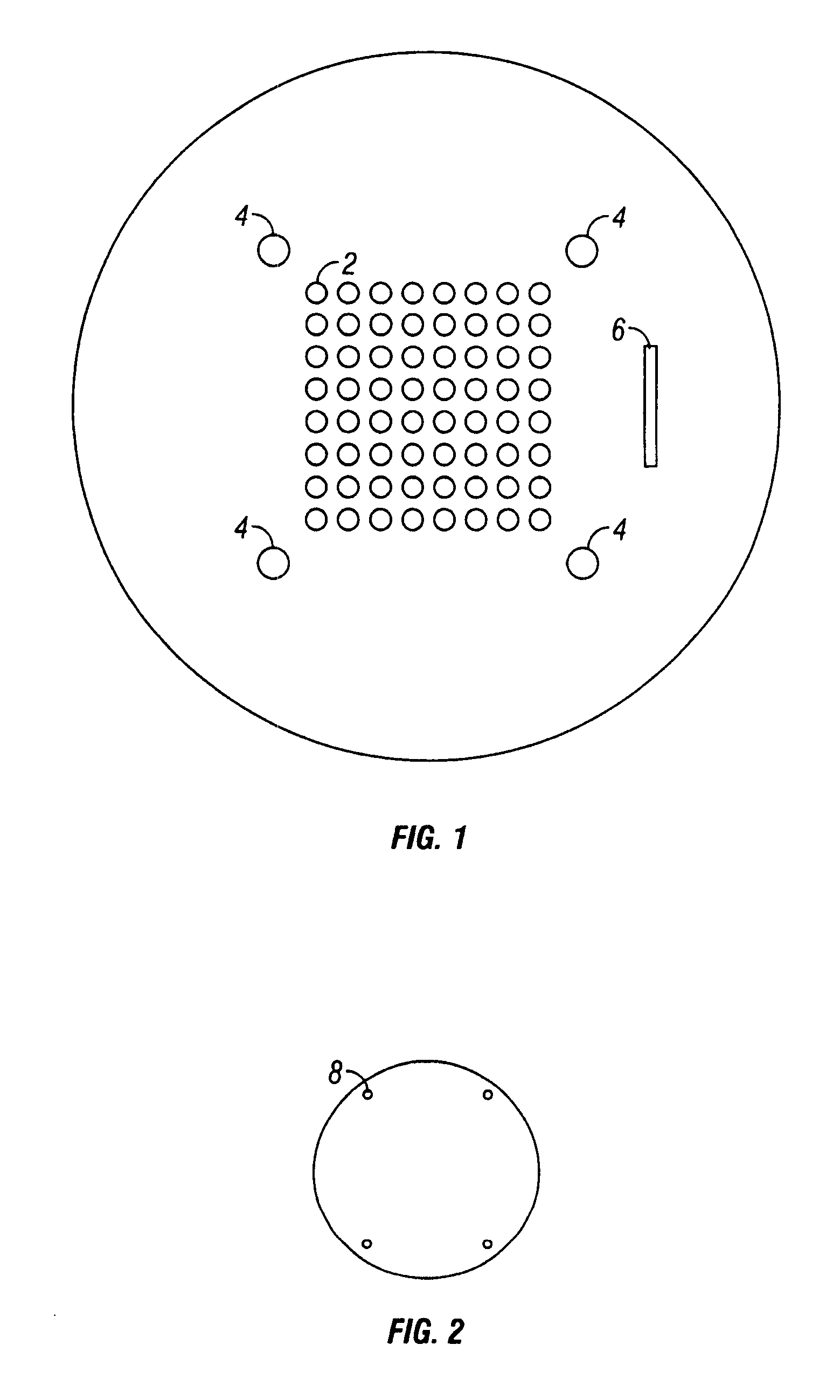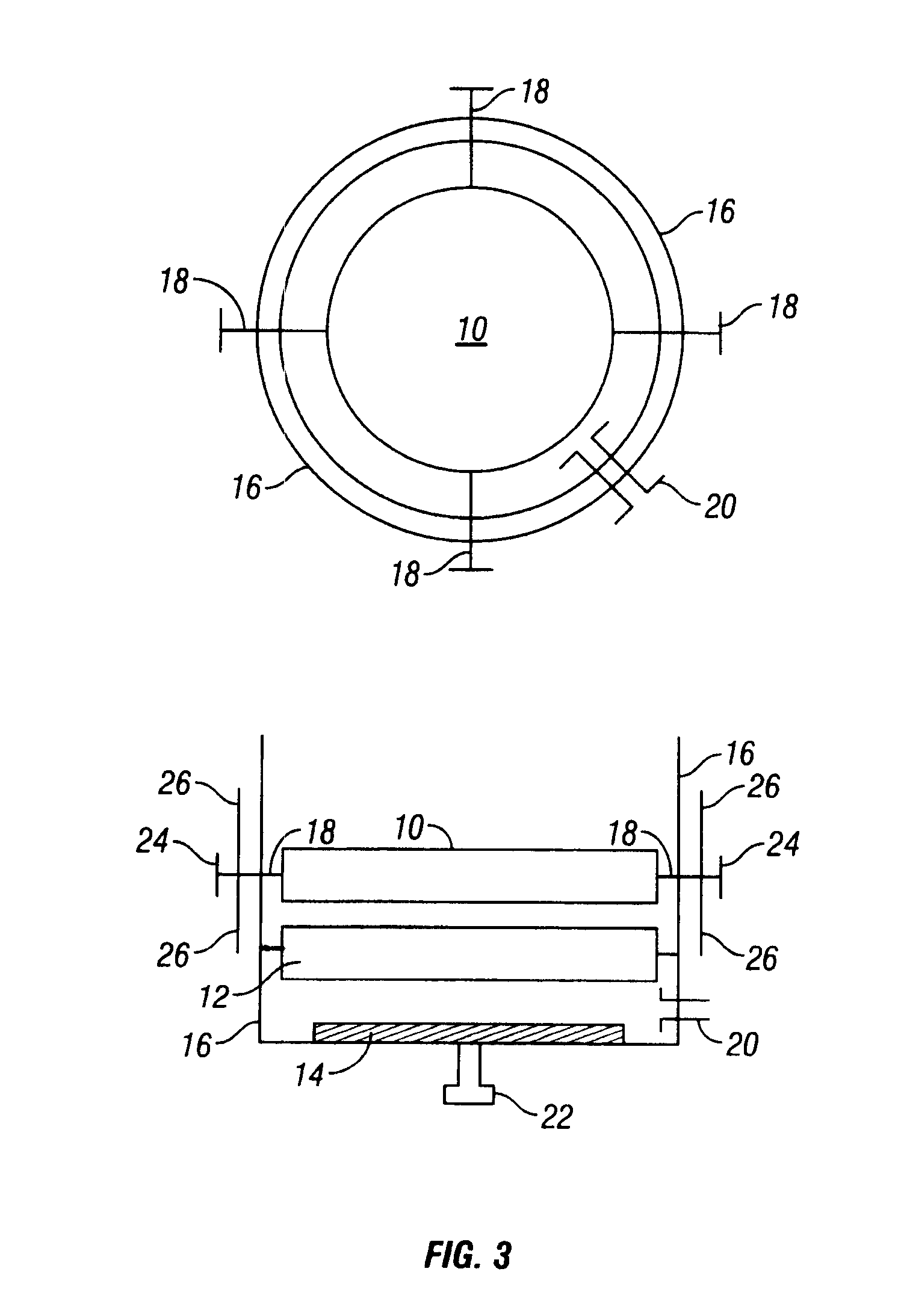Indium features on multi-contact chips
a multi-contact chip and indium technology, applied in the field of semiconductor detectors and chips, can solve the problems of indium bumps, damage to detectors, physical and chemical delicateness of czt surface,
- Summary
- Abstract
- Description
- Claims
- Application Information
AI Technical Summary
Benefits of technology
Problems solved by technology
Method used
Image
Examples
example 1
[0028] In the following example, indium bumps are grown on a pixilated CZT detector. The CZT substrate is obtained with an 8×8 array of pixels and precision alignment marks on the CZT surface. The pixilated CZT detector is mounted on the base 16 of the alignment fixture (fixture) (FIG. 3) and constrained in place with a compatible adhesive agent, such as “photoresist”, that is placed on the non-pixilated CZT surface. The photoresist is then cured by heating at 95° C. for 2 minutes. A clean Teflon shim of the same thickness as the desired height of the indium bumps (i.e., the shim had a thickness of between about 10 to 100 μm), is placed on top of the CZT. The shadow mask, containing an 8×8 array of holes (FIG. 1), is then mounted into the fixture's shadow mask constraining ring (disc 10) (using mounting holes 8) and constraining ring is locked into place with screws 18 above the CZT detector. The fixture's height adjustment feature, the thumb wheel 22, is then employed to precisely ...
example 2
[0031] In another embodiment indium bumps are grown on a VLSI chip. The equipment and procedure are substantially the same as described in Example 1. A shadow mask is obtained with an array of holes matching the pixel pattern of the VLSI chip. The chip 14 and shadow mask 12 are constrained in the alignment fixture (FIG. 3), a precisely measured space is created between the mask and the chip with a Teflon spacer, the fixture is placed in a commercial mask aligner 26 (model Karl Suss MJB-3 IR), and the mask is precisely horizontally aligned above the VLSI chip. The alignment fixture is removed from the commercial mask aligner 26 and placed in an indium evaporation chamber and indium is deposited through the mask onto the chip's surface. As in Example 1, height of the bumps grown on the VLSI chip is determined by the size of the Teflon spacer used.
example 3
[0032] Using existing flip-chip technology, the CZT detector and the VLSI chip are bump bonded together to form a hybrid detector. A standard flip-chip alignment device is used for the process. A small (about 1 mm×1 mm) drop of a silicon adhesive is then placed on two or three of the corners of the resulting bump-bonded chip to provide additional mechanical strength. A silicon adhesive is used because it cures at room temperature, does not outgas contaminants and provides a joint that is resilient to shocks and vibrations. A silicon adhesive that is typically used is RTV 167 made by General Electric.
PUM
 Login to View More
Login to View More Abstract
Description
Claims
Application Information
 Login to View More
Login to View More - R&D
- Intellectual Property
- Life Sciences
- Materials
- Tech Scout
- Unparalleled Data Quality
- Higher Quality Content
- 60% Fewer Hallucinations
Browse by: Latest US Patents, China's latest patents, Technical Efficacy Thesaurus, Application Domain, Technology Topic, Popular Technical Reports.
© 2025 PatSnap. All rights reserved.Legal|Privacy policy|Modern Slavery Act Transparency Statement|Sitemap|About US| Contact US: help@patsnap.com



